iBooks Author vs. Kotobee Author

In this article, we’re comparing two high ranking interactive ebook authoring software: Kotobee Author and iBooks Author (please note that iBooks Author has been discontinued back in July, 2020). Our goal is to help you find the best solution for your ebook. Though we all love Kotobee, we also love being unbiased with facts. We will list the points that each excel at, as well as provide you with comparison tables for specifications and features.
In order to give you a complete fair sense of the two and the experiences, we’ve tested the learning curves of both software with new users in our company. We let them independently find their way around both software from watching tutorials videos to scouring knowledge bases until they knew their way well around both. Finally, they were tasked with creating the same ebook on both software, using their own same MacBooks so that any differences in the experience will be due to the software, not the machine.
So buckle up, grab a cup of coffee and settle down. This might be a long ride.
The Specs
| iBooks Author | Kotobee Author | |
| Operating System | Mac only | Windows and Mac |
| Software Size | 600MB | 173MB |
| Import Formats | PagesDOCX
EPUB |
PDFHTML
DOCX EPUB |
| Export Formats | TextPDF
EPUB iBooks |
Kindle (MOBI)PDF
Word EPUB Web (HTML5) App Desktop Win/Mac App Chrome App Android App iOS App Windows Phone App SCORM 1.2 Package SCORM 2004 Package Host Directly Online |
| Interactive content | ✔ | ✔ |
| DRM | Provided only by iBooks Store | Multiple types (depends on export format) |
| LMS Integration | – | ✔ |
| Price | Authoring is free.Publishing and exporting fees apply.* | Authoring is free. Branding and lifting limitations require a paid license.** |
* For more details on how fees and taxes are calculated, scroll mid-way down Apple’s Banking and Tax info sheet.
** Kotobee Author requires a paid license for the use of particular features, and some export formats. See Kotobee Author’s paid licenses.
Features for the Author
The features that both software bring to the author in terms of ebook content are for the most part similar. However subtle the differences, the resulting ebooks are be quite different in terms of capabilities.
| iBooks Author | Kotobee Author | |
| Templates | ✔ | |
| Images | ✔ | ✔ |
| Galleries | ✔ | ✔ |
| Hyperlinks | ✔ | ✔ |
| Questions | ✔ | ✔ |
| Videos | ✔ | ✔ |
| 3D objects | ✔ | ✔ |
| Audio | ✔ | ✔ |
| Widgets | ✔ | ✔ |
| Container/Text Box | ✔ | ✔ |
| Charts and Graphs | ✔ | |
| Pop Up | ✔ | ✔ |
| HTML Source * | ✔ | |
| CSS * | ✔ | |
| Javascript * | ✔ |
* It’s worth noting that by gaining access to any chapter’s underlying HTML, CSS, and Javascript, along with some average web development skills, any kind of interactive content or behavior can be developed.
Features for the Reader
Interactive ebooks exported from iBooks Author and Kotobee Author can be opened on various readers, depending on the format. Ebook app formats (i.e. web app, mobile app, desktop app) exported from Kotobee Author will run independently without requiring a third-party tool, since they already contain Kotobee Reader bundled inside seamlessly.
iBooks Author on the other hand does not export ebook apps. Instead, its exported ebooks open on Apple Books (formerly iBooks).
In both cases, the user reading the ebook will gain advantage of the following reading tools:
| Apple Books | Kotobee Reader | |
| Highlighting | ✔ | ✔ |
| Bookmarking | ✔ | ✔ |
| Note-taking | ✔ | ✔ |
| Text-To-Speech | ✔ | ✔ |
| Google Search | ✔ | ✔ |
| Book Search | ✔ | ✔ |
| Wikipedia Search | ✔ | ✔ |
| Copying To Clipboard | ✔ | ✔ |
| Adjusting Font Size | ✔ | ✔ |
| Adjusting Font Type | ✔ | ✔ |
| Background Color | ✔ | |
| Export PDF Chapter | ✔ | |
| Print Chapter | ✔ |
With Kotobee’s ebook apps, you (as the author) can enable or disable the reading tools you wish. They are all obligatory however with Apple iBooks.
In-Depth Comparison
We’ll go through six of the most important features: layout options, media, questions/reviews, scripting, emulations, and export formats.
Layout Options
When you start a new ebook in either platform, you’re faced with a layout decision.
Kotobee Author offers you two options: reflowable and fixed layout. Both can be exported as an EPUB or mobile, desktop or web app. The cool thing about Kotobee Author is that even after you’ve chosen which layout you’d like for your ebook, with every new chapter you get to choose which layout you want for that chapter, giving you ultimate flexibility.
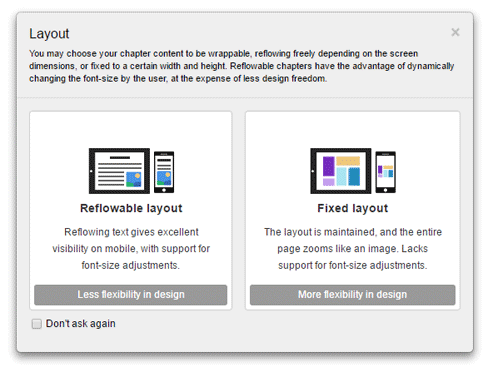
iBooks Author, on the other hand, offers you a myriad of templates as a portrait or landscape fixed layout (for iBooks store only), or reflowable layout (EPUB only). While the templates option is a good touch on iBooks Author’s part, that the fixed and reflowable layouts are only available with one ebook format is unnecessarily limiting.
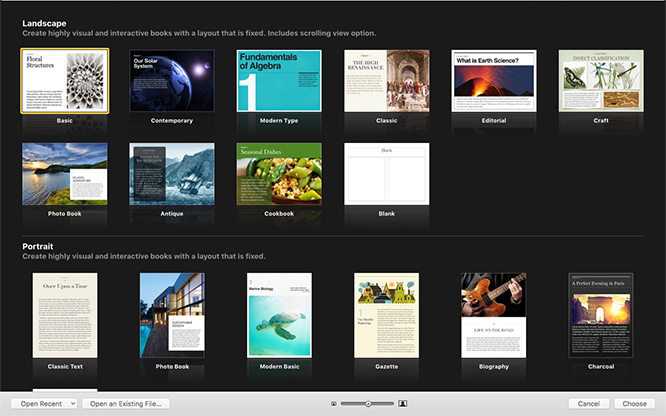
Images
iBooks Author provides photo editing and a nice option for interactive images. You can add text labels where readers can zoom in for a closer look and more information.
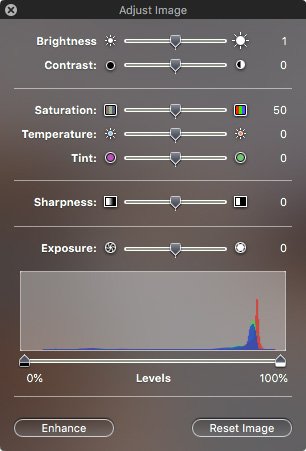
Kotobee Author does not provide photo editing, but rather a collection of image styles and effects, as well as click animations.
Image Galleries
The differences are nearly negligible here. iBooks Author allows you to give your gallery a title and description. Kotobee Author allows you to set the scaling, text wrap, image captions, and select from a larger variety of gallery styles.
Audio and Video
One of the strong suits for Kotobee Author, is the ability to not only upload, but also embed both videos and audio into your ebook.
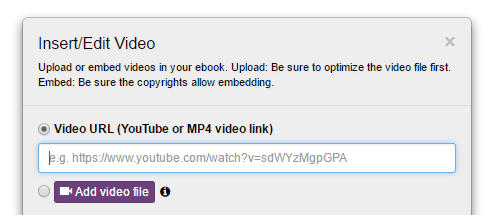
With iBooks Author, however, if you’re not dragging and dropping the audio (or uploading it) into the ebook, it won’t work.
If a connection is guaranteed, embedded videos are a great way to save on space, as ebooks can get heavy. Also, some video copyrights don’t allow you to download a video and upload it to your ebook, but will allow embedding. If your targeted video is on YouTube, there is a workaround for this limitation in iBooks Author– you can add a YouTube widget.
Question Types
You can add quizzes for your readers to answer in your ebook. Kotobee refers to them as Questions and iBooks Author refers to them as Reviews.
Both Kotobee Author and iBooks Author offer multiple choice questions with text or image questions and single or multiple correct answers.
With iBooks Author, you can also add images as MCQ choices. The most stunning of the question types is iBooks Author’s drag and drop questions: text labels or thumbnails can be dragged to set locations on a graphic. Kotobee Author, on the other hand, offers the more traditional true-false, MCQ, and short answer questions. You may determine the number of lines that appears for the answer and set the correct keywords.
Kotobee Author Questions:
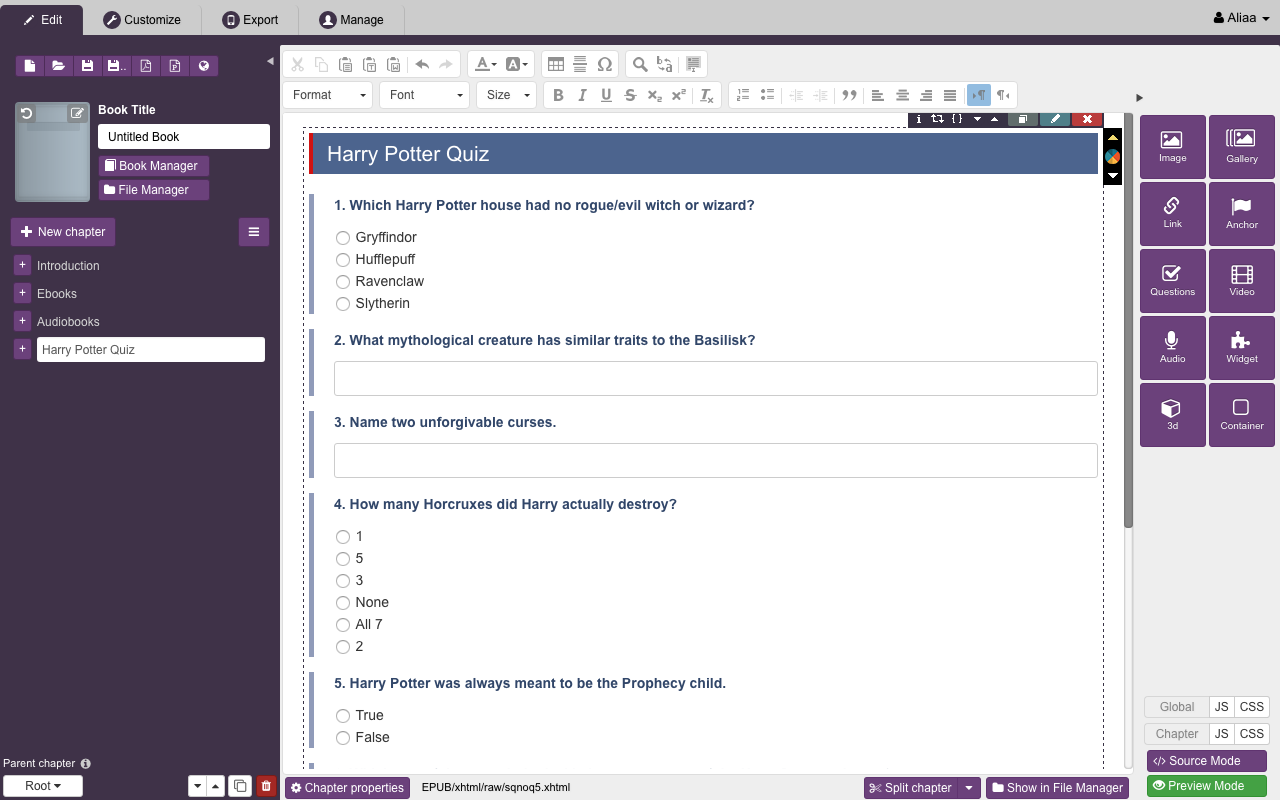
iBooks Author Questions:
Question Display
iBooks Author displays each question individually. Kotobee Author displays the complete question set. Besides several color styles, Kotobee Author offers a few advanced capabilities:
- The questions can appear in a popup window.
- The order of questions can be randomized.
- A fixed number of questions can be pulled from a larger bank of questions that you provide, so readers get a different set of questions each time (great for fun quizzes and exam security).
- The answers may be saved to an in-app notebook
Checking Answers
The similarities of checking answers in each software ends with that they both check answers. After that, they’re worlds apart.
In Kotobee author, if you add a question set, then the set will be corrected when the reader clicks “Submit answers.” If you add each question individually, then the questions will be checked individually.

In iBooks Author, each question is checked individually regardless. iBooks Author provides only the correct answer. Kotobee Author can additionally give a score report. It can also provide an explanation to each question, as well as a link to a reference for further reading. An example:

iBooks Author does not provide a score for question sets. Scoring options in Kotobee Author vary and allow for weighted point distribution so that harder questions are worth more points than easier questions.
Reporting Results
iBooks Author questions are strictly self-study aids. The score reports will not be sent anywhere. Kotobee Author offers three options: emailing results to a preset email address, to an email address entered by the reader, and LMS integration using LTI. What really makes Kotobee Author a suitable choice for educators, is the fact that it can be exported to a SCORM package which can then be imported into an LMS (Learning Management System) such as Moodle. The SCORM package will report to the LMS the scores of students. It can also send the grades to the educators via email to let them know how their students are doing and what they’re struggling with.
| iBooks Author | Kotobee Author | |
| True-False | ✔ | |
| Multiple Choice | ✔ | ✔ |
| Drag & Drop | ✔ | |
| Short Answer | ✔ | |
| Check Answers | ✔ | ✔ |
| Reporting Results | ✔ |
Scripting
One advantage that Kotobee Author offers is that HTML, CSS, and Javascript can be easily added and edited. Which naturally means greater control and creative freedom for the author, especially a web-skilled one.
Emulation
You can see your ebook app on different devices and machines, in portrait and landscape modes. Some of the phone models are a bit old, but it’s nice to be able to see what your ebook will look like on phone, tablet and desktop screens. It’s available in Kotobee Author, not iBooks Author.

Export Formats
The export formats are without a doubt Kotobee Author’s strongest selling point over any other interactive ebook authoring software (explore the full list of Kotobee Author’s export formats). Writers can create one interactive ebook and export it in many different formats, both as ebooks and ebook apps. iBooks Author exports only PDFs, EPUBs, and iBooks formats, none of which are accepted by Amazon, which means you’ll have to convert the file. You may prefer creating your ebook while keeping your options open when it comes to exporting.
Personal Experiences
Now that we’re done with the technicalities, let’s move on to our testers’ personal experiences with both software.
The fact that iBooks Author only works on MacBooks was a negative point for our testers. Not having the flexibility to use the software on their Windows-based work machine is a big downfall.
Picking a favorite fluctuated with every phase of the project. iBooks Author’s templates and their elegant interface is a first-sight beauty. The disappointment is that after all the hard work by our testers, they discovered they can’t publish it on Amazon. Ultimately function won over form: that is the wider range of options available coupled with multiple export formats of Kotobee Author.
And the Winner is..
In conclusion, depending on where you plan to publish your ebook, or even what operating system you use and who your target audience is, your choice of software will become blaringly obvious.
If you are a solid Mac user, targeting Apple users, you will find iBooks Author’s interface familiar, and so will your readers when reading your ebook(s). Note however, adding support later on for other devices (e.g. Android or Windows) will definitely be a struggle – so you need to be 100% certain that your client won’t be asking for that additional support down the road.
In terms of versatility and a wider range of operations, Kotobee Author has the lead. Let’s face it, in terms of use, functionality beats aesthetics.
Hope our experience helps you when you start creating an interactive ebook. Feel free to share your own experiences with iBooks Author or Kotobee Author down below.
Read these posts.
Ebook Formats Explained for Beginners
8 Strange Habits Well-Known Writers Formed to Write Better

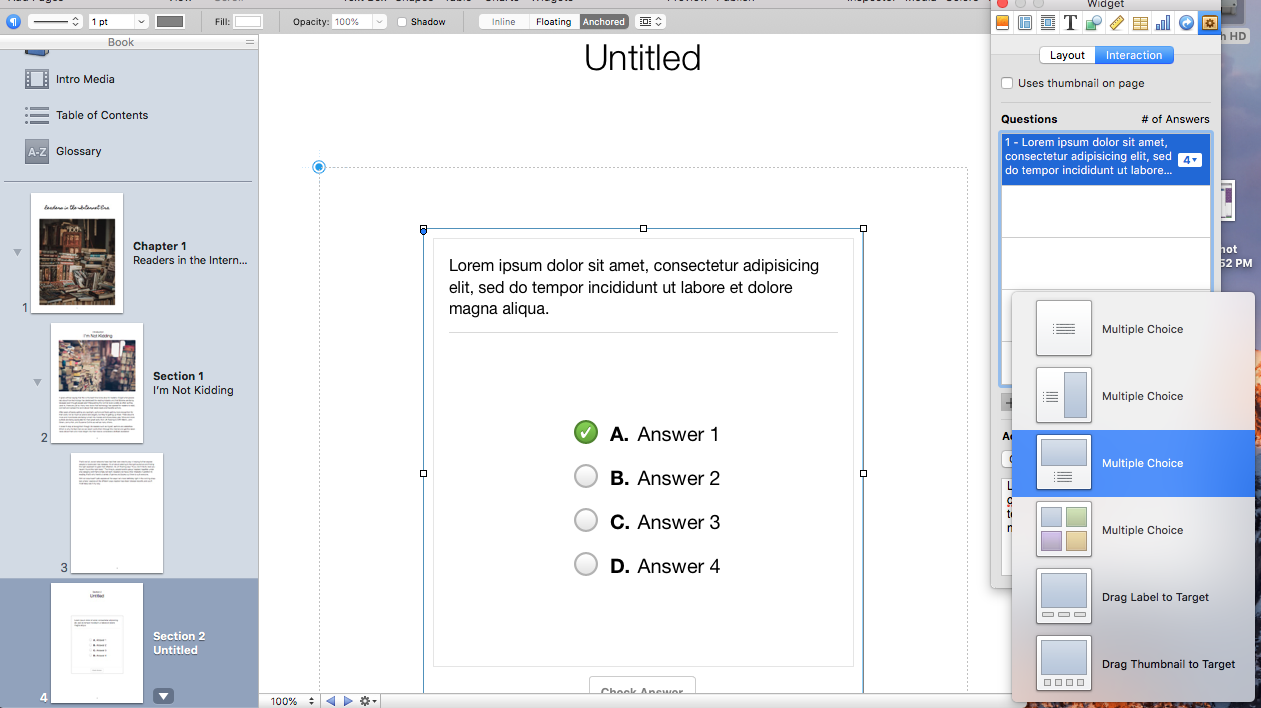















Karim
December 26, 2018Awesome article!